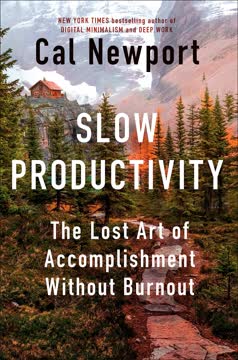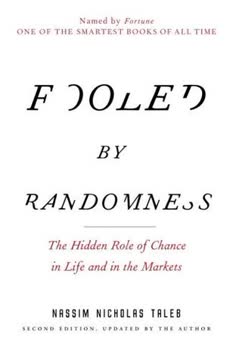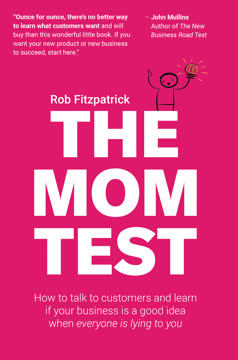Key Takeaways
1. Vision-driven products create transformative change
Your product is your mechanism to create the change you envision for your users.
Vision drives innovation. A clear, compelling vision is the foundation for creating transformative products. It aligns teams, inspires action, and provides direction amid uncertainty. Vision-driven products, like Tesla's Model 3, revolutionize industries by solving real problems in novel ways.
Iteration alone is insufficient. While iteration is valuable for refinement, relying solely on it often leads to local maxima rather than global breakthroughs. Companies like Boeing, with its 737 MAX, demonstrate the pitfalls of incremental improvements without a strong guiding vision.
Change requires purpose. Successful products are not just about features or profits, but about creating meaningful change in the world. Organizations like Lijjat show how a clear vision of empowering women through employment can drive decades of impact and growth.
2. Product diseases hinder innovation and success
Product diseases are ubiquitous across industries and sizes of companies.
Common ailments. Products often suffer from diseases that impede their success:
- Hero Syndrome: Focusing on scale over meaningful impact
- Strategic Swelling: Lack of focus leading to diluted efforts
- Obsessive Sales Disorder: Sacrificing long-term vision for short-term gains
- Hypermetricemia: Over-reliance on metrics without understanding their relevance
- Locked-In Syndrome: Inability to explore alternative solutions
- Pivotitis: Changing direction too frequently
- Narcissus Complex: Excessive inward focus at the expense of user needs
Diagnosis enables cure. Recognizing these diseases is the first step towards addressing them. By understanding the symptoms and causes, teams can develop strategies to prevent or overcome these common pitfalls.
Vision as antidote. A clear vision and strategy act as a powerful defense against product diseases, ensuring teams remain focused on creating meaningful change rather than getting sidetracked by short-term pressures or misaligned goals.
3. Craft a compelling vision using the Radical Vision Statement
A good vision has three important traits: It is centered on the problem you want to see solved in the world. It is a tangible end state you can visualize. It is meaningful to you and the people you intend to impact.
Problem-centered approach. The Radical Vision Statement template helps teams articulate a vision focused on the change they want to create, not just business aspirations. This ensures the product serves a genuine need and resonates with users.
Visualizable and meaningful. A good vision paints a clear picture of the desired end state, making it easier for teams to align and work towards a common goal. It should be deeply meaningful to both the team and the intended users.
Template for clarity. The Radical Vision Statement uses a fill-in-the-blank format to address key questions:
- Whose world are you trying to change?
- What does their world look like today?
- Why is the status quo unacceptable?
- When will you know you've achieved your vision?
- How will you bring about this change?
4. Develop a comprehensive RDCL strategy
Your product strategy is how you translate your vision into an actionable plan.
RDCL framework. A comprehensive product strategy answers four key questions, represented by the acronym RDCL:
- Real pain points: What triggers users to seek your solution?
- Design: How does your offering solve the pain?
- Capabilities: What enables you to deliver the solution?
- Logistics: How do you get the solution to users?
Validate assumptions. Real pain points must be both valued and verified. This ensures the strategy addresses genuine needs rather than assumed problems.
Holistic approach. By considering all aspects of RDCL, teams can develop a robust strategy that aligns with the vision and addresses potential challenges in delivering the product or service.
5. Prioritize using the vision-fit-versus-survival rubric
To build vision-driven products, you've defined a clear vision and a strategy. Prioritization is how you can infuse your vision in your everyday decision-making.
Balance long-term and short-term. The vision-fit-versus-survival rubric helps teams make decisions that balance progress towards the vision with immediate business needs.
Four quadrants. Opportunities can be categorized into:
- Ideal: High vision fit, low risk
- Investing in Vision: High vision fit, higher risk
- Building Vision Debt: Low vision fit, low risk
- Danger: Low vision fit, high risk
Shared decision-making tool. This rubric provides a common language for teams to discuss and justify priorities, ensuring alignment with the overall vision while addressing practical concerns.
6. Execute and measure with hypothesis-driven approach
Your product is a constantly improving mechanism to create change.
Hypothesis-driven execution. Frame your strategy as a series of hypotheses to test, using the format: "If [experiment], then [outcome], because [connection]."
Measure what matters. Instead of focusing solely on popular metrics, identify and track indicators that show progress towards your vision and validate your strategy.
Iterate thoughtfully. Use learnings from your experiments to refine your RDCL strategy and, if necessary, adjust your vision. This ensures continuous improvement while staying true to your core purpose.
7. Create a culture that maximizes intrinsic motivation
To build vision-driven products, you need a culture that maximizes intrinsic motivation in employees.
Four quadrants of work experience. Categorize work activities into:
- Meaningful Work: Satisfying, not urgent
- Heroism: Satisfying, urgent
- Organizational Cactus: Depleting, urgent
- Soul-Sucking: Depleting, not urgent
Maximize meaningful work. A good culture increases time spent on meaningful work while minimizing the other quadrants, especially soul-sucking activities.
Foster psychological safety. Create an environment where team members feel safe to take risks, share ideas, and admit mistakes. This promotes learning, innovation, and better decision-making.
8. Recognize and mitigate digital pollution
Digital pollution is the collateral damage to society from unregulated tech growth, just as environmental pollution is the damage from unregulated industrial growth.
Forms of digital pollution:
- Fueling inequality
- Hijacking attention
- Creating ideological polarization
- Eroding privacy
- Eroding the information ecosystem
Unintended consequences. Even well-intentioned products can create digital pollution. Recognizing these effects is crucial for responsible innovation.
Balance profit and purpose. Pursue profits while being vision-driven to create sustainable growth that benefits society rather than harming it.
9. Embrace the Hippocratic Oath of Product
In building products, we need a Hippocratic oath as much as doctors do.
Responsibility comes with influence. As products increasingly impact millions of lives, creators must take responsibility for the consequences of their innovations.
Five principles:
- Center your vision on the user
- Align your business model with users' needs
- Ensure values affect decision-making
- Reevaluate how you measure success
- Infuse purpose beyond profit-making in your culture
Ethical innovation. By embracing these principles, product creators can build successful products that create positive change while avoiding unintended negative consequences.
Last updated:
FAQ
1. What is "Radical Product Thinking: The New Mindset for Innovating Smarter" by R. Dutt about?
- Vision-Driven Product Development: The book introduces a systematic methodology for building products that are driven by a clear vision, rather than just short-term iterations or financial goals.
- Contrast with Iteration-Led Approaches: It critiques the common iteration-led approach (e.g., Lean Startup, Agile) that often leads to local maxima and unintended negative consequences, advocating instead for a vision-driven, purpose-led process.
- Five-Element Framework: The author presents the Radical Product Thinking (RPT) framework, which includes Vision, Strategy, Prioritization, Execution & Measurement, and Culture.
- Societal Impact and Responsibility: The book also addresses the broader impact of products on society, introducing concepts like digital pollution and the Hippocratic Oath of Product to encourage ethical responsibility.
2. Why should I read "Radical Product Thinking" by R. Dutt?
- Move Beyond Short-Termism: The book helps readers and organizations break free from the trap of short-term, iteration-led thinking that can lead to product misalignment and irrelevance.
- Practical, Actionable Tools: It provides practical templates, exercises, and frameworks that can be immediately applied to create vision-driven products in any industry or role.
- Ethical Product Leadership: The book emphasizes the importance of building products responsibly, considering their impact on users and society, not just financial metrics.
- Universal Applicability: Whether you’re a startup founder, product manager, executive, or policymaker, the RPT approach is designed to be relevant and transformative across sectors.
3. What are the key takeaways from "Radical Product Thinking" by R. Dutt?
- Vision Must Drive Iteration: A clear, actionable vision should guide all product decisions and iterations, not the other way around.
- Diagnose and Avoid Product Diseases: The book identifies seven common "product diseases" that derail products and organizations, offering cures rooted in vision and strategy.
- Five Elements of RPT: Success comes from systematically applying Vision, Strategy (RDCL), Prioritization, Execution & Measurement, and Culture.
- Ethics and Societal Impact: Product leaders must recognize and address the unintended consequences of their products, embracing a Hippocratic Oath of Product.
4. How does "Radical Product Thinking" by R. Dutt define and differentiate between vision-driven and iteration-led approaches?
- Vision-Driven Approach: Starts with a clear, detailed vision of the change you want to create, using iterations to refine how to get there.
- Iteration-Led Approach: Lets short-term feedback and financial metrics dictate direction, often leading to local maxima and product misalignment.
- Long-Term vs. Short-Term: Vision-driven products play the long game, aiming for global maxima, while iteration-led products optimize for immediate gains.
- Examples and Case Studies: The book contrasts companies like Tesla (vision-driven) with GM (iteration-led) to illustrate the difference in outcomes.
5. What are the "seven product diseases" described in "Radical Product Thinking" by R. Dutt, and how can they be avoided?
- Hero Syndrome: Focusing on scale and recognition over meaningful impact; avoided by centering on authentic change.
- Strategic Swelling: Spreading resources too thin across many initiatives; cured by clear prioritization and focus.
- Obsessive Sales Disorder: Sacrificing long-term vision for short-term sales; managed by balancing vision with survival needs.
- Hypermetricemia: Overemphasis on measurable outcomes, often the wrong ones; solved by measuring what truly matters for your vision.
- Locked-In Syndrome: Sticking to familiar solutions or technologies; overcome by focusing on the problem, not the method.
- Pivotitis: Frequent, unfocused changes in direction; prevented by committing to a vision and only resetting when truly necessary.
- Narcissus Complex: Internal focus on company needs over customer impact; addressed by keeping the user and desired change at the center.
6. What is the Radical Product Thinking (RPT) framework, and what are its five elements?
- Vision: Crafting a clear, detailed, and authentic vision centered on the change you want to create for a specific group.
- Strategy (RDCL): Translating vision into an actionable plan by addressing Real pain points, Design, Capabilities, and Logistics.
- Prioritization: Using a two-by-two rubric (vision fit vs. survival) to balance long-term vision with short-term business needs.
- Execution & Measurement: Implementing a hypothesis-driven approach to test and measure progress toward the vision, rather than just tracking popular metrics.
- Culture: Treating organizational culture as a product, systematically engineering an environment that maximizes intrinsic motivation and psychological safety.
7. How do you craft a compelling vision statement according to "Radical Product Thinking" by R. Dutt?
- Mad Libs Template: Use a fill-in-the-blanks format to specify who you’re helping, what their world looks like today, why the status quo is unacceptable, the desired end state, and how you’ll bring about the change.
- Problem-Centered: The vision should focus on the problem to be solved, not on organizational aspirations or slogans.
- Tangible and Visualizable: It must describe a concrete end state that team members and customers can picture and internalize.
- Authentic and Meaningful: The vision should resonate with both the team and the people you intend to impact, avoiding grandiosity for its own sake.
8. What is the RDCL strategy in "Radical Product Thinking" by R. Dutt, and how is it applied?
- R = Real Pain Points: Identify and validate the true pain points of your target users, ensuring they are both valued and verified.
- D = Design: Define the features, interface, and identity of your product that directly address those pain points.
- C = Capabilities: Determine the tangible and intangible resources, skills, or infrastructure needed to deliver your solution.
- L = Logistics: Plan how the product will reach users, including channels, pricing, support, and business model alignment.
- Iterative Refinement: The RDCL strategy is tested and refined through real-world feedback and iteration, always anchored to the vision.
9. How does "Radical Product Thinking" by R. Dutt recommend prioritizing product decisions and balancing short-term and long-term needs?
- Vision Fit vs. Survival Rubric: Use a two-by-two matrix to categorize initiatives by their alignment with the vision and their impact on survival (risk mitigation).
- Ideal Quadrant: Focus on actions that both advance the vision and reduce risk.
- Investing in the Vision: Deliberately allocate resources to long-term vision projects, even if they increase short-term risk.
- Vision Debt: Occasionally take on short-term, vision-divergent actions for survival, but track and plan to pay down this "debt."
- Transparent Communication: Make trade-offs explicit to the team, fostering alignment and autonomy in decision-making.
10. What is "digital pollution" as described in "Radical Product Thinking" by R. Dutt, and why does it matter?
- Definition: Digital pollution refers to the unintended negative consequences of products on society, such as inequality, attention hijacking, polarization, privacy erosion, and information ecosystem degradation.
- Root Cause: Often results from iteration-led, profit-maximizing approaches that ignore broader societal impacts.
- Examples: Biased AI, addictive social media, misinformation, and business models that exacerbate inequality.
- Call to Action: The book urges product leaders to recognize, measure, and actively prevent digital pollution by embedding responsibility and ethics into product development.
11. What is the "Hippocratic Oath of Product" in "Radical Product Thinking" by R. Dutt, and how can product leaders apply it?
- Ethical Responsibility: Product leaders, like doctors, must take responsibility for the well-being of users and society, not just for financial outcomes.
- Five Applications: Embed ethics into vision (user-centered), strategy (align business model with user needs), prioritization (let values guide decisions), execution & measurement (measure true impact), and culture (purpose beyond profit).
- Prisoner’s Dilemma Analogy: If everyone maximizes individual gain, society suffers; collective responsibility leads to better outcomes for all.
- Three Is Framework: Use Intimidation (regulation), Incentives (aligning profit with ethics), and Inspiration (intrinsic motivation) to drive responsible product development.
12. What are the best quotes from "Radical Product Thinking" by R. Dutt, and what do they mean?
- "Radical Product Thinking means being inspired by a change you want to bring to the world and thinking about your product comprehensively as a mechanism for creating that change."
- This encapsulates the core philosophy: products are tools for purposeful change, not just vehicles for profit.
- "An iteration-led approach can move financial KPI up and to the right, but it doesn’t guarantee that you’ll build game-changing products."
- Highlights the limitation of focusing solely on short-term metrics without a guiding vision.
- "Your product is your mechanism to create the change you envision for your users."
- Reinforces the idea that the product’s purpose is to serve a meaningful, user-centered vision.
- "Digital pollution is the collateral damage to society from unregulated tech growth, just as environmental pollution is the damage from unregulated industrial growth."
- Draws a parallel between the tech industry’s impact on society and
Review Summary
Radical Product Thinking receives mostly positive reviews, with readers praising its fresh perspective on product development. Many appreciate the book's emphasis on vision-driven approaches, practical frameworks, and ethical considerations. Reviewers find the case studies diverse and insightful, and the writing style clear and accessible. Some highlight its value for both startups and established companies. A few critics note repetition in later chapters or feel certain sections deviate from the main focus. Overall, readers recommend it as a valuable resource for product managers and entrepreneurs.
Similar Books










Download PDF
Download EPUB
.epub digital book format is ideal for reading ebooks on phones, tablets, and e-readers.




